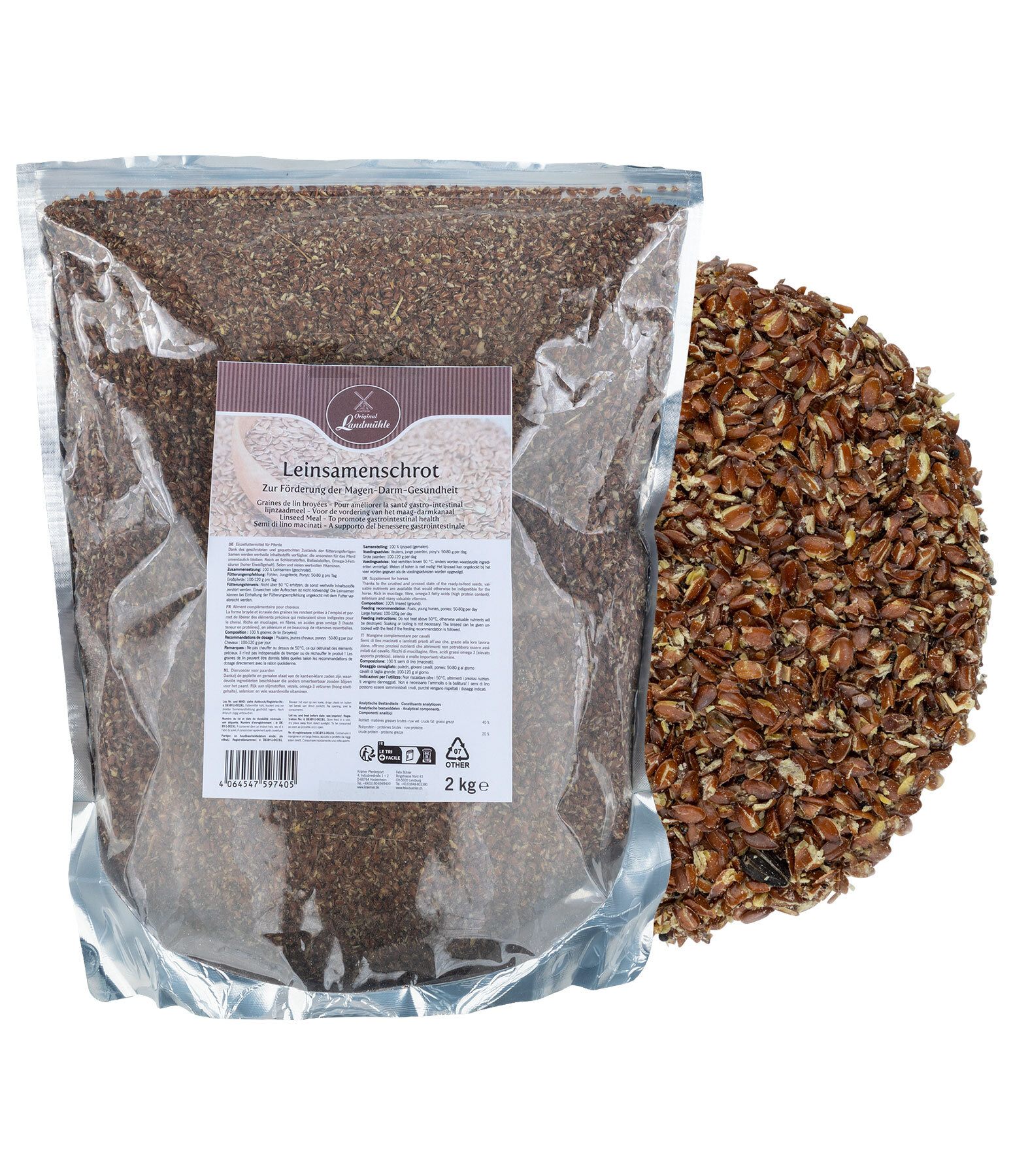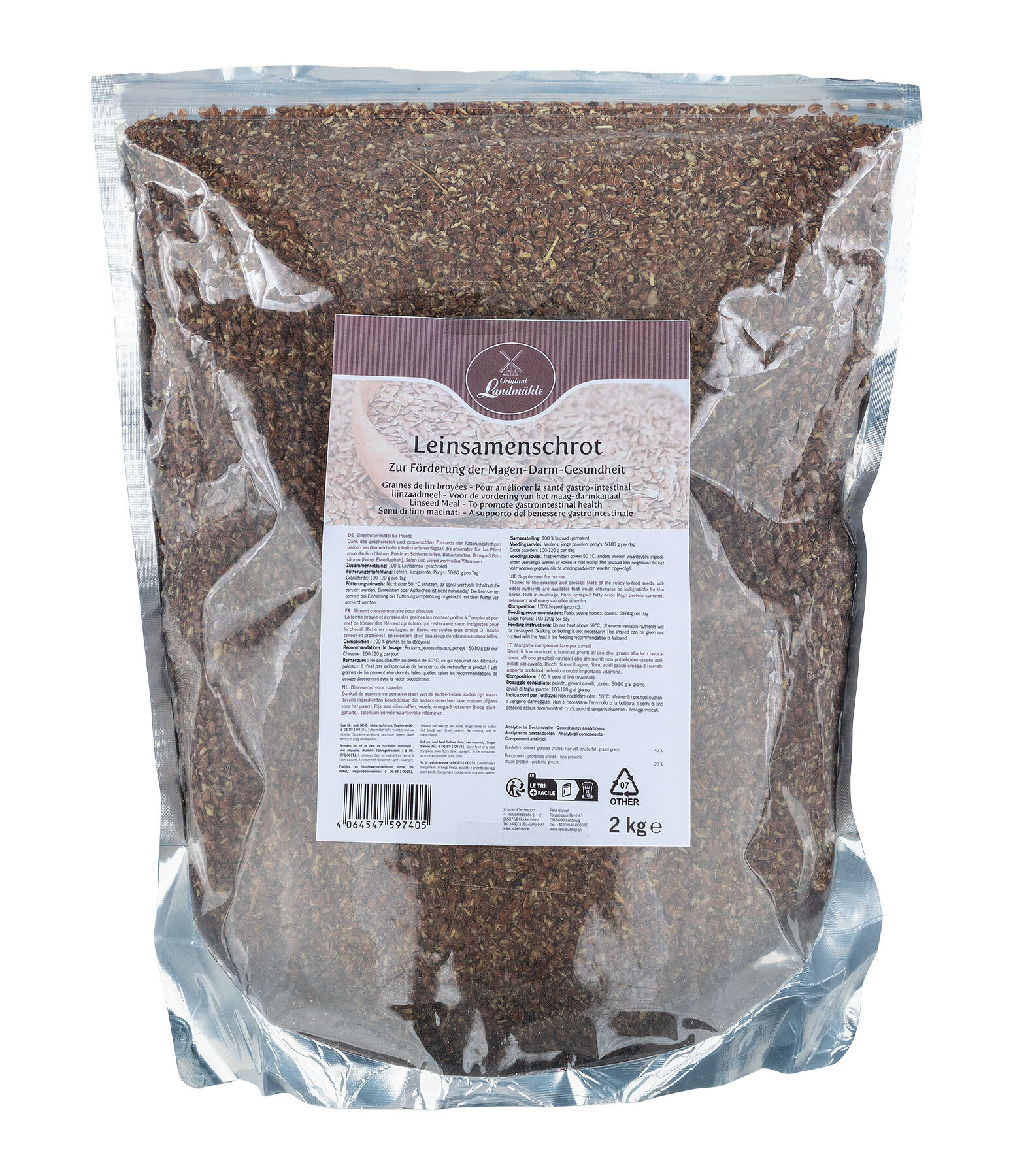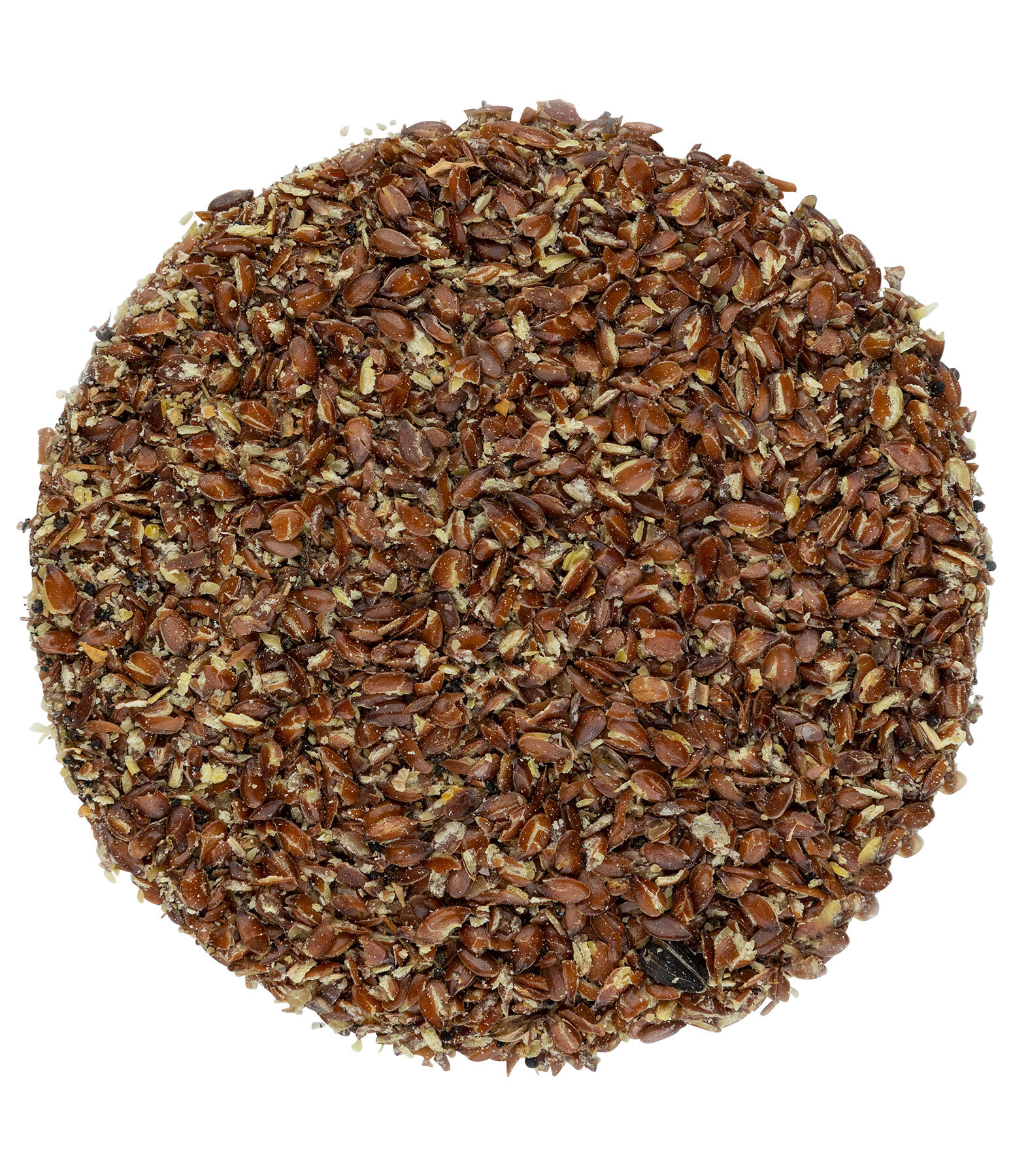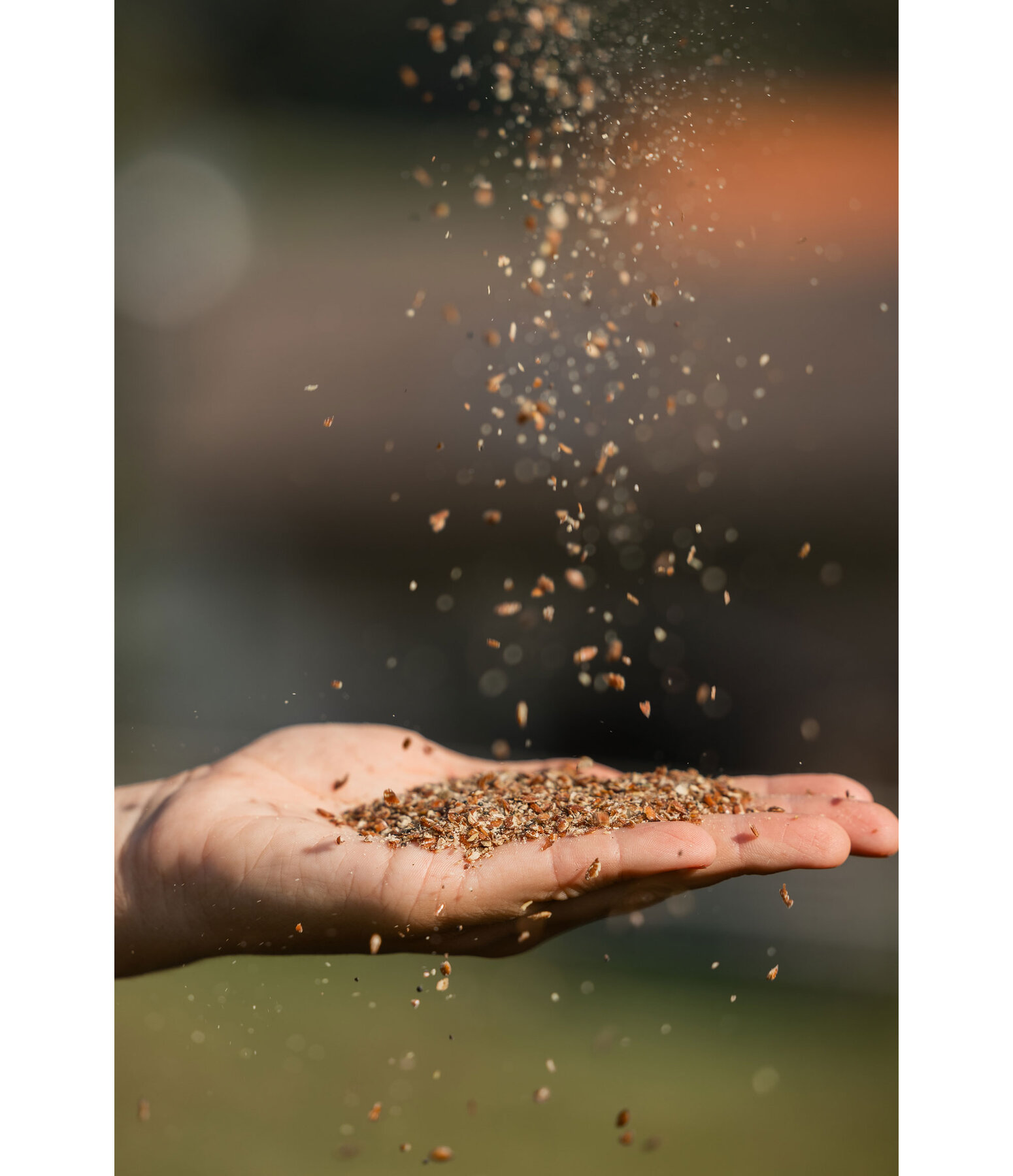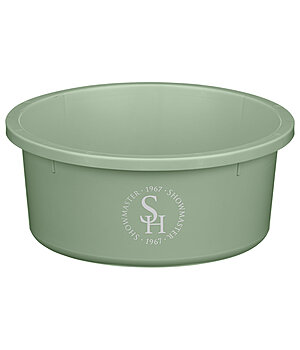
Product Description
Straight feed for horses.
Thanks to the crushed and pressed state of the ready-to-feed seeds, valuable nutrients are available that would otherwise remain indigestible for the horse due to the husk. Linseed has a high fat content of over 40%. Unsaturated fatty acids are predominant at 80 to 90%, including approx. 20 to 30% oleic and linoleic acid and 40 to 60% linolenic acid, which belong to the omega-3 fatty acids. Omega-3 fatty acids can have a positive effect on the elasticity of the cell membrane of blood and nerve cells. They can therefore promote blood circulation in the body. After swelling, they also contain mucilage, which lines the stomach and intestinal wall and can therefore have a calming effect on horses with stomach ulcers, for example. The husks are also very rich in fibre and can therefore support intact digestion. Linseed itself is particularly rich in selenium and valuable vitamins such as vitamins B1, B2, B6 and E. As the seed can absorb up to eight times its weight in water and thus bind it, it is also said to have a dietetic effect and is recommended for diarrhoea, colic and faecal water.
Composition: 100% linseed (ground).
Feeding Recommendation:
Foals, youngstock, ponies: 50-80g per day
Large horses: 100-120g per day
Feeding Notes:
Do not heat above 50°C, otherwise valuable nutrients will be destroyed. Soaking or boiling is not necessary! The linseed can be given uncooked with the feed if the feeding recommendation is followed. Information on the hydrogen cyanide content: A quantity of 4mg hydrogen cyanide per kilogramme of the horse's body weight is considered lethal. 1g of linseed contains approx. 0.2mg of hydrocyanic acid, meaning that a horse (500kg) would have to ingest several kilograms of linseed to suffer poisoning.
According to the literature (Meyer and Coenen (2014): Pferdefütterung, publisher Enke Verlag, Edition 5, Stuttgart, p. 137 ff.) is safe for an adult horse and can also be fed dry. However, if you don't want to take any risks, you can boil linseed. Boiling for 10 minutes inactivates the enzyme linase. Although this does not reduce the amount of hydrocyanic acid, it prevents its intermittent release in the intestine. Boiling also improves the mucilage formation of the linseed. However, the process also has a disadvantage: heat-sensitive omega-3 fatty acids and vitamins are destroyed during this process. Furthermore, make sure that you only feed the boiled linseed after it has cooled down. Hot feed irritates the horse's stomach.



